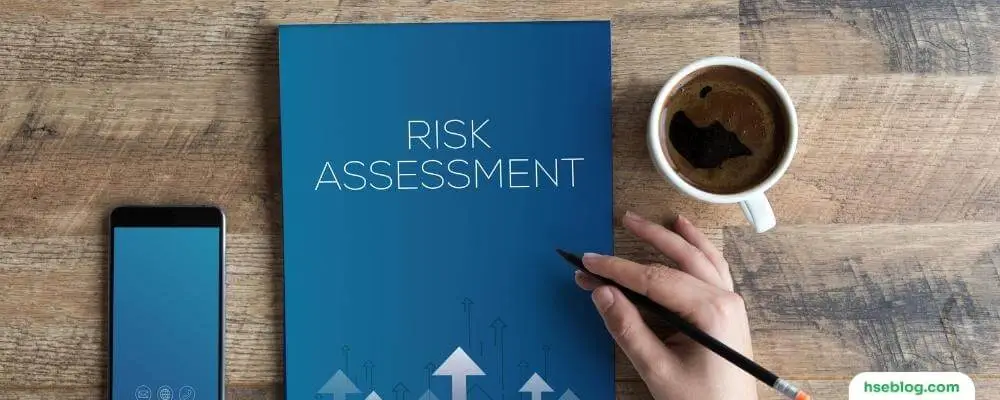Risk assessment is an essential process that helps individuals and organizations identify potential hazards, evaluate the likelihood and impact of those hazards, and develop strategies to mitigate or manage them. Whether you are running a business, planning a project, or simply making decisions in your personal life, understanding the objectives of risk assessment can help you make informed choices and avoid potential pitfalls.
In this blog, we will discuss 10 main objectives of risk assessment that you need to know. From identifying and evaluating risks to developing risk management plans, this blog will provide valuable insights into the risk assessment process and how it can benefit you. So, whether you are a risk management professional or simply looking to improve your decision-making skills, read on to discover the key objectives of risk assessment.
10 Main Objectives of Risk Assessment
Risk assessment is identifying potential hazards, evaluating the likelihood and consequences of those hazards, and determining appropriate risk management strategies. The following are 10 objectives of risk assessment:
1. To Prevent Death and Personal Injury
The primary objective of risk assessment is to prevent death and personal injury by identifying and evaluating potential hazards and risks associated with a particular activity, process, or environment.
By conducting a thorough risk assessment, individuals and organizations can identify potential hazards and take appropriate measures to eliminate or mitigate them, reducing the likelihood of accidents, injuries, and fatalities. This includes identifying and implementing appropriate safety measures, providing necessary training to employees and stakeholders, and regularly reviewing and updating risk management strategies to ensure ongoing safety and protection.
2. To Prevent Other Types Of Loss Incident
Risk assessment is a critical process beyond just preventing death and personal injury. It also aims to prevent other types of loss incidents, including damage to property, financial loss, reputational damage, and environmental harm. These types of losses can have significant consequences on an individual or organization’s bottom line, reputation, and even the environment.
By conducting a comprehensive risk assessment, individuals and organizations can identify potential hazards and risks that may lead to these losses and take appropriate measures to prevent them.

3. To Prevent Breaches Of Statue Law
The third objective of risk assessment is to prevent breaches of statute law, which might lead to enforcement action and/or prosecution. This means that organizations must ensure that their operations comply with legal requirements such as health and safety regulations, environmental laws, and data protection rules. Failure to comply with these laws can result in legal action being taken against the organization, which can be costly and damaging to its reputation.
Therefore, risk assessments are essential for identifying any areas where legal compliance may be at risk and taking steps to address these issues before they become a problem. By ensuring that their operations are legally compliant, organizations can minimize the risk of legal action and protect their employees, customers, and stakeholders.
4. To Prevent Direct and Indirect Costs
The fourth objective of risk assessment is to prevent direct and indirect costs that follow from an accident. Accidents and incidents can result in various costs for an organization, including damage to equipment or property, medical expenses for injured employees, and costs associated with investigations and legal action. These costs can be significant and majorly impact the organization’s financial stability.
By conducting risk assessments, organizations can identify potential hazards and take steps to minimize the risk of accidents and incidents occurring. This can help prevent the direct and indirect costs associated with accidents and ensure that the organization can operate efficiently and effectively without burdening the financial and operational costs of accidents and incidents.
5. To Provide a Framework for Effective Risk Management
The fifth objective of risk assessment is to provide a structured framework for organizations to make informed decisions about addressing the risks associated with their activities. This framework helps organizations systematically identify, analyze, and evaluate potential hazards arising from their operations, products, or services. Organizations can use a structured approach to consider potential risks and not overlook any significant hazards that may impact their objectives.
Once potential risks have been identified and assessed, organizations can use this information to prioritize risk management efforts and allocate resources effectively. This process allows them to develop targeted strategies to mitigate or manage the most significant risks while also considering the cost-benefit trade-offs of various risk management options.
6. To Ensure Consistency in Risk Identification, Analysis, and Response
The sixth objective of risk assessment is to ensure that risks are identified, analyzed, and responded to consistently across the organization. This consistency is vital to maintaining a uniform understanding of potential hazards and their implications, and it enables organizations to compare and prioritize risks effectively.
Organizations can create a common language and approach for risk management by adopting a standardized risk assessment methodology, facilitating better communication and collaboration among different departments and stakeholders. This consistent approach also promotes transparency and accountability. It enables decision-makers to track risk management efforts and measure their success over time, helping foster a proactive and risk-aware organizational culture.

7. To Communicate Effective Risk Findings to Stakeholders
The seventh objective of risk assessment is to effectively communicate the results of the risk assessment process to relevant stakeholders. Clear communication of risk findings is crucial for fostering awareness, understanding, and buy-in from all parties involved in risk management. This includes sharing information about the identified risks, their potential impact, the likelihood of occurrence, and the proposed mitigation strategies.
By communicating these results, stakeholders can better appreciate the organization’s risk exposure, make informed decisions, and support risk management initiatives. Moreover, transparent communication can help identify additional risks or mitigation opportunities from different perspectives, fostering a collaborative approach to risk management that ultimately strengthens the organization’s resilience and adaptability.
8. To Optimize Resource Allocation
The eighth objective of risk assessment is to provide valuable input into the decision-making process regarding the allocation of resources. Organizations can make informed decisions about where to invest their time, money, and personnel to effectively manage and mitigate potential hazards by identifying, evaluating, and prioritizing risks. This ensures that resources focus on addressing the most significant risks while considering the cost-benefit trade-offs of different risk management options.
In this way, risk assessment helps organizations optimize resource allocation, improving overall operational efficiency and increasing their ability to withstand and recover from adverse events. By integrating risk assessment findings into resource allocation decisions, organizations can balance risk management efforts and other strategic objectives, ultimately enhancing their resilience and long-term success.
9. To Support The Organization In Achieving Its Objectives
The ultimate objective of risk assessment is to support the organization in achieving its objectives by proactively managing risks and enhancing its resilience to adverse events. Risk assessment is crucial in informing strategic planning, decision-making, and resource allocation, enabling organizations to navigate uncertainty and capitalize on opportunities. By identifying, analyzing, and mitigating risks, organizations can reduce potential losses, safeguard their assets, and ensure the continuity of operations.
Furthermore, an effective risk assessment process fosters a risk-aware culture within the organization, promoting stakeholder collaboration, transparency, and accountability. This collective understanding of risk management helps organizations adapt to changes in their internal and external environments, strengthening their ability to overcome challenges and achieve their strategic goals. Risk assessment is a vital tool for enabling organizations to successfully navigate the complexities of today’s business landscape and secure long-term growth and success.

10. To Foster Stakeholder Confidence and Trust
The tenth objective of risk assessment is to foster stakeholder confidence and trust by demonstrating a proactive approach to risk management. By conducting thorough risk assessments, organizations can identify potential hazards and implement strategies to mitigate or manage them, reducing the likelihood and impact of negative events.
This approach protects the organization from potential losses and demonstrates its commitment to responsible business practices, stakeholder interests, and sustainability. This, in turn, enhances stakeholder confidence and trust, promoting positive relationships with customers, employees, investors, and other stakeholders.
By fostering stakeholder confidence and trust through effective risk assessment and management, organizations can enhance their reputation, differentiate themselves from competitors, and achieve long-term success.
Conclusion
The process of risk assessment plays a vital role in identifying and mitigating potential hazards, allowing individuals and organizations to make informed decisions, optimize resource allocation, and achieve their strategic objectives. Organizations can promote collaboration, transparency, and accountability through a structured approach to risk management, fostering a risk-aware culture that enhances their resilience and adaptability.
The ten main objectives of risk assessment outlined in this blog provide valuable insights into the benefits of adopting a proactive approach to risk management, enabling individuals and organizations to navigate uncertainty, capitalize on opportunities, and achieve long-term success.
By understanding and incorporating these objectives into their risk management strategies, individuals and organizations can protect their assets, minimize potential losses, and build stakeholder confidence and trust. Effective risk assessment and management are critical to maintaining a competitive edge and thriving in today’s rapidly evolving business environment.

